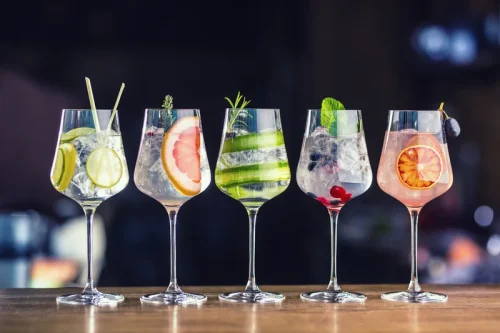
It is common for individuals to struggle with abstinence as a long-term choice, especially for those who are in the mild to moderate range of AUD (i.e., experiencing fewer consequences from use) and/or only beginning treatment (Rosenberg and Melville, 2005; van Amsterdam and van den Brink, 2013). Therefore, it may be important for providers to deliver more pointed interventions around moderating use across different daily situations and, perhaps, emphasizing and advising the patient on the challenges of daily, moderation-based goals. While abstinence may be a more guaranteed trajectory to reduce drinking overall, individuals who incorporate abstinence days into their moderation repertoire will also need to be more prepared for days they do drink in order to not exceed safety guidelines.

1. Goal setting for alcohol reduction
In the initial interviews, all the clients declared themselves abstinent and stressed that substance use in any form was not an option. Outcomes for continuous variables by each goal preference at 3 and 12 months’ follow-up are shown in Table 2. For PDA, however, there was a significant effect at 3 and 12 months such that those preferring abstinence had a greater increase controlled drinking vs abstinence in abstinent days than those preferring non-abstinence. For DDD, those preferring abstinence had a significantly greater reduction at 3 but not at 12 months. Goal abstainers were more likely to achieve a successful outcome (abstinence/non-problem drinking) than goal non-abstainers at 3 months, with a trend in the same direction remaining at 12 months (Table 1).
Global Clinical Outcome
Although such support is currently managed by specialist care, primary care stands in a unique position to provide holistic care. Unfortunately, there has been little empirical research evaluating this approach among individuals with DUD; evidence of effectiveness comes primarily from observational research. For example, at a large outpatient SUD treatment center in Amsterdam, goal-aligned treatment for drug and alcohol use involves a version of harm reduction psychotherapy that integrates MI and CBT approaches, and focuses on motivational enhancement, self-control training, and relapse prevention (Schippers & Nelissen, 2006). Participants with controlled https://ecosoberhouse.com/ use goals in this center are typically able to achieve less problematic (38%) or non-problematic (32%) use, while a minority achieve abstinence with (8%) or without (6%) incidental relapse (outcomes were not separately assessed for those with AUD vs. DUD; Schippers & Nelissen, 2006). Mixed-effects models with days (level 1) nested within persons (level 2) formally evaluated the ratio of between-person variability in daily goal setting to within-person variability. Herein, “between-person” refers to level-2 effects (i.e., person-level individual differences), and “within-person” refers to level-1 effects (day-to-day differences for the same person).

2. Established treatment models compatible with nonabstinence goals

These observations differ from those reported by Elal-Lawrence et al. (1986) who found that clients’ drinking goals at the beginning of treatment were unrelated to outcomes at 12 months’ follow-up; in contrast, clients’ goals at the end of treatment did predict what kind of successful outcome was achieved (Elal-Lawrence et al., 1987). The reasons for the difference from the present findings are not clear, although it is possible that we may have found a stronger association with outcome had we recorded goal preference at the completion of treatment. Adamson and Sellman (2001) divided non-abstinent goal clients into two groups—those aiming to drink within national drinking guidelines for New Zealand and those aiming to reduce but above the national guideline level.
Abstinence Therapies
Interventions that involved frequent, repeated intravenous infusions, uncommon equipment in primary care, illicit drugs, experimental chemicals, and drugs unlicensed in the UK were not included in the review (see list in supplement 3). We excluded studies on pregnant women, participants with chronic liver disease, participants with HIV/AIDS, and patients with liver transplant owing to the specific clinical considerations of these populations. In addition to issues with administrative discharge, abstinence-only treatment may contribute to high rates of individuals not completing SUD treatment.
Clinics care points
Preliminary Analyses
- Interventions that involved frequent, repeated intravenous infusions, uncommon equipment in primary care, illicit drugs, experimental chemicals, and drugs unlicensed in the UK were not included in the review (see list in supplement 3).
- It is also a variable with immediate clinical resonance given that the client is asked to what extent they intend to change their drinking following the treatment process.
- Change and effects of such goals are important markers to how people change on their own and/or what may be useful to focus on when entering treatment.
- UKATT was a multi-centre, randomized controlled trial comparing an adaptation of Motivational Enhancement Therapy (Miller et al., 1992b) and Social and Behavioural Network Therapy (Copello et al., 2002, 2009).

